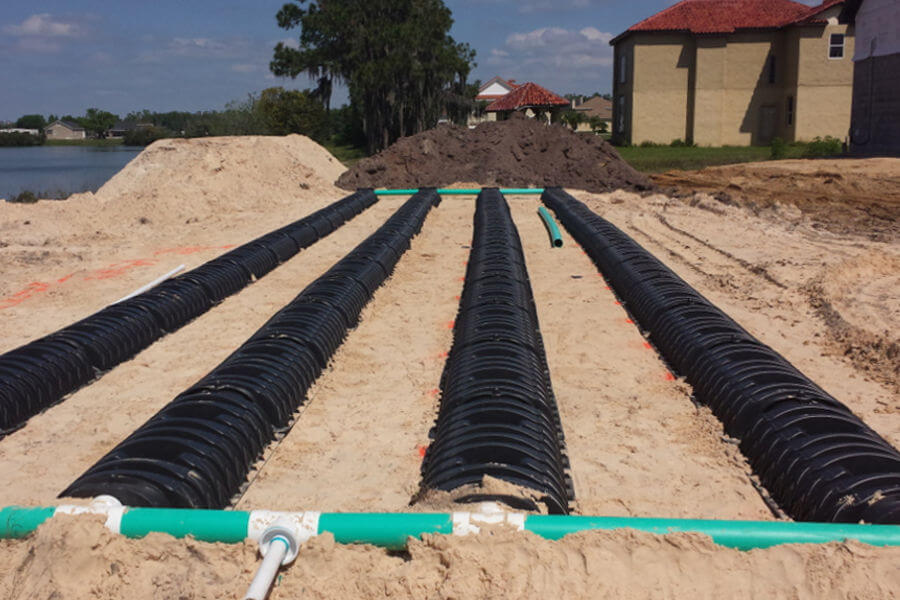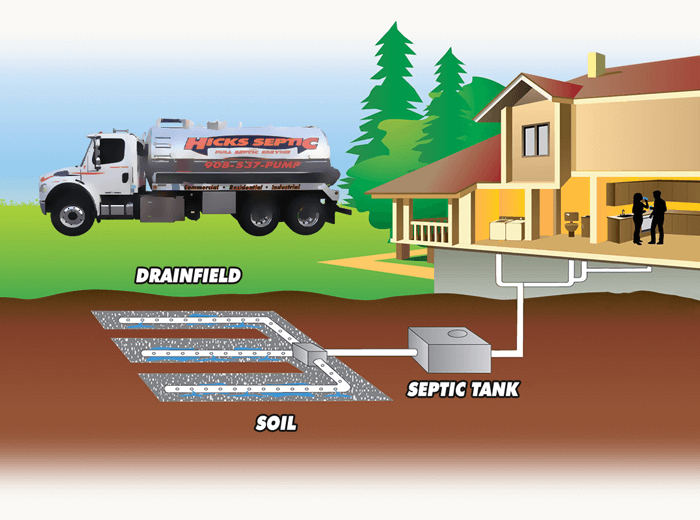When you think about your home’s plumbing, the septic system leach field—also known as a septic drain field, leach bed, or septic tank drain field—might not come to mind right away. Yet this underground network plays a critical role in safely dispersing wastewater from your septic tank into the surrounding soil.
Homeowners in rural or suburban areas who rely on septic systems should understand how septic field lines, leach field piping, and regular maintenance impact the functionality, health, and longevity of their entire septic system. If you’ve ever asked questions like “how deep is a leach field buried?” or “How long does a septic field last?”—you’re not alone.
Let’s explore the most frequently asked questions about leach fields—and if you ever need help, our team of licensed plumbers is ready to assist with inspections, septic field line repair, and complete septic tank and leach field installation.
What Is a Leach Field?

A leach field is a crucial part of a septic tank system, consisting of a series of perforated pipes, also known as leach lines, buried underground in drain field chambers. These pipes distribute pre-treated wastewater (effluent) from the septic tank across a wide area, where it seeps into the surrounding soil.
The leach field septic system allows soil microbes to naturally filter out harmful pathogens, completing the treatment process. Think of the septic tank and leach field as a one-two punch—first separating solids from liquids, then safely returning the filtered water to the earth.
How Deep Is a Leach Field?
Many homeowners wonder: “How deep are leach lines buried?” or “How deep is a septic field?”
Typically, leach field pipes are buried about 3 to 4 feet below the surface. The depth of septic drain fields can vary depending on local regulations, soil conditions, and the septic leach field design. In general, septic tank leach field lines are placed 5 to 6 feet apart, spanning an area up to 100 feet or more, depending on household water usage and septic leach field size.
If you’re asking, “how deep is a leach field pipe?” or “How deep are septic lines buried?” it’s best to consult a professional plumber who can analyze your specific septic field dimensions and property layout.
How to Locate Your Septic Tank Drain Field

How do you find your leach lines or septic drain field?
Most properties with septic systems include a septic tank and leach field diagram as part of the official records. These diagrams help identify the septic tank location, septic tank lateral lines, and the layout of the leach field.
If you’re asking, “how do I find my leach field?”, our experts can use advanced detection tools to locate your drain field and perform a full assessment of your septic system field lines.
Common Leach Field Problems and Warning Signs
A failing septic leach field can cause major plumbing headaches and environmental hazards. Common signs of leach field issues include:
- Slow drains or backups in your home. If your sinks, showers, or toilets drain slowly despite no visible clogs, your septic tank field lines or septic leach field pipe may be blocked.
- Lush, green patches in your yard. Overly vibrant or wet spots often indicate excess moisture from a leaking or overloaded drain field.
- Standing water or soft ground above the septic tank drain field. This can signal saturation or poor drainage caused by compacted soil, tree roots, or field line failure.
- Foul odors outdoors or near plumbing fixtures. This could be a result of untreated wastewater surfacing due to a failing drain field septic system.
If you’re noticing any of these signs, call us immediately. Our professionals are trained in drain field repair, cleaning septic drain field lines, and complete field line replacement.
How Long Does a Septic Leach Field Last?
Wondering “how long does a drain field last?” or “how long is a leach field good for?”
The average lifespan of a septic system leach field ranges from 15 to 50 years, depending on:
- Maintenance frequency – Regular septic tank pumping every 3–5 years and periodic field inspections help extend your system’s life.
- Soil type and drainage – Sandy soils allow better absorption, while clay or loam may lead to drain field failure.
- Water usage – Overloading your system with excessive water can overwhelm the leach lines, shortening their life.
- Root intrusion – Avoid planting deep-rooted trees or shrubs near your septic field lines to prevent cracking and blockages.
Can You Replace a Leach Field in the Same Spot?
Many homeowners ask, “Can you replace a leach field in the same spot?”
Technically, yes—but it’s not always advisable. Replacing a septic field in the same location typically requires soil excavation and removal of contaminated soil and may cost more due to permitting and environmental mitigation. In most cases, relocating your septic leach field to an area with better soil conditions and fewer obstructions (like tree roots) is more effective and less costly.
If you’re considering field line replacement, our team can evaluate your land and provide expert recommendations on the best leach field layout and installation practices.
What Should You Avoid Placing Over a Septic Leach Field?
Even though your leach field septic system is underground, what you do above it matters. Avoid:
- Building structures like decks, sheds, or patios directly over the leach bed.
- Driving vehicles or heavy machinery over the field lines septic area.
- Planting trees or deep-rooted plants within 10 feet of the septic field lines.
- Installing fencing or posts that could puncture the leach pipes.
Respecting your septic field size and surface area helps prevent costly damage and extends the lifespan of your septic system.
Can You Have a Septic Tank Without a Leach Field?
Absolutely not. A septic tank without a leach field cannot function properly or legally. The leach field is essential for filtering wastewater and dispersing it safely into the soil. In most regions, permitting regulations require both a septic tank and leach field for a fully compliant system.
Need Septic Leach Field Help? Call the Pros Today
Whether you’re experiencing a leach field leaking in one spot, planning to replace a septic drain field, or wondering “how to build a drain field” or “how much does it cost to replace a leach field?”, we’re here to help.
Our professional plumbing team offers the following:
✅ Septic tank and leach field installation
✅ Septic system inspections and maintenance
✅ Drain field repair and replacement
✅ Leach line cleaning and diagnostics
✅ Leach field design and permitting assistance
Don’t wait for a complete drain field failure. Contact us today to ensure your septic system leach field performs efficiently and safely for years to come.
Ready to Get Started?
Let our licensed experts help you navigate leach field requirements, septic tank drain field materials, and every detail of your septic and leach field needs. Whether you’re looking to maintain, repair, or install a new septic field system, we’re the trusted local team with the experience, tools, and knowledge to get the job done right.



